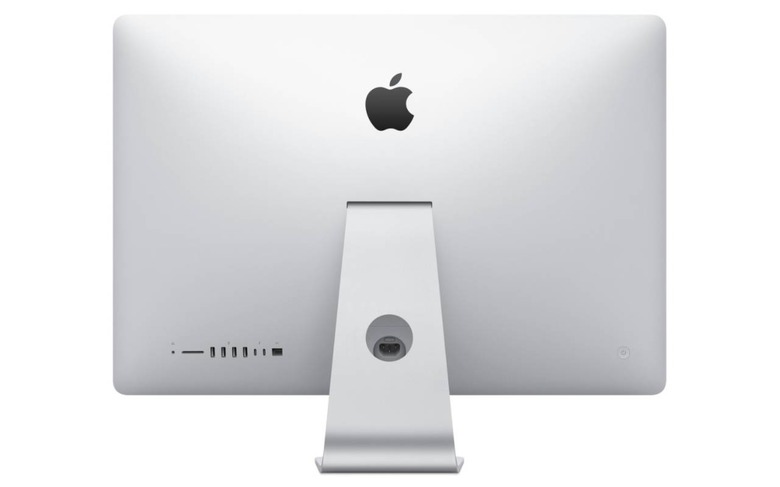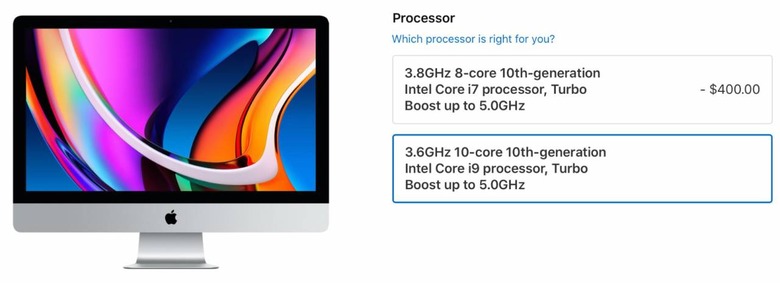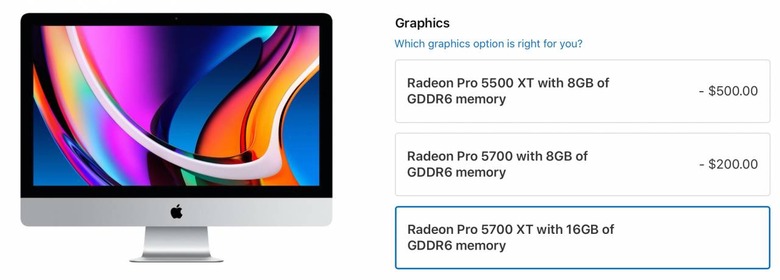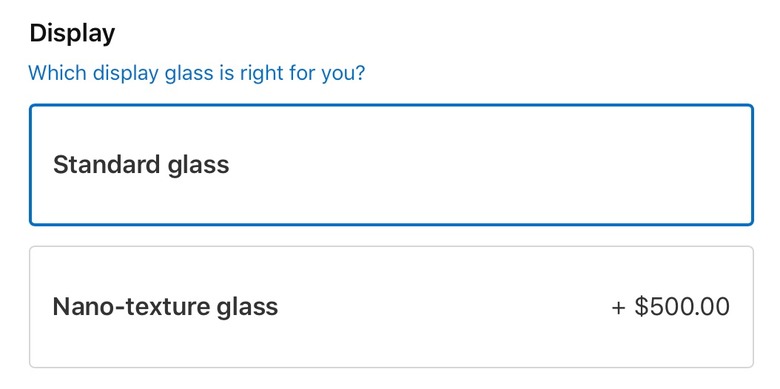A Maxed Out Mid-2020 iMac 27-Inch Is Nearly $9k: Here's What You Get
The mid-2020 iMac may not quite be ready for Apple Silicon, but that doesn't mean it's any less of a powerhouse if you open your wallet wide. Put up for order today, the newest iteration of the macOS all-in-one may look the same, but there are plenty of new features inside, along with some performance upgrades you simply couldn't get before.
All mid-2020 iMac 27-inch models get a new, 1080p FaceTime HD webcam, along with Apple's T2 Security Chip. The ports are the same on the back: a 3.5mm headphone jack, an SDXC memory card slot, four USB-A, two Thunderbolt 3 USB-C, and an ethernet jack.

If you want the very fastest processor for this refresh, you'll need to be starting from Apple's mid-tier iMac 27-inch. That comes with a 3.3GHz 6-core 10th Generation Intel Core i5 CPU as standard, and starts at $1,999. However, for $500 mode you can have the 3.6GHz 10-core 10th Generation Intel Core i9, which supports up to 5.0GHz Turbo Boost speeds.
Were you to start from Apple's top-tier preconfigured mid-2020 iMac 27-inch, that has a 3.8GHz 8-core Intel Core i7 out of the box. You can have the same 3.6GHz Core i9 as an upgrade, for $400.

For memory, the mid-2020 iMac 27-inch now supports up to 128GB of 2666MHz DDR4 memory. That's still half the maximum of the also-updated mid-2020 iMac Pro, but should be more than enough for most tasks. It's not a cheap option, mind: taking the standard 8GB up to the 128GB max is $2,600.
As for graphics, the entry-level and mid-tier iMac 27-inch come with AMD's Radeon Pro 5300 with 4GB of GDDR6 memory. The top-tier preconfigured version of the all-in-one gets the Radeon Pro 5500 XT with 8GB of GDDR6 memory. There are two upgrades for that.
Spend $300 more, and you can have the Radeon Pro 5700 with 8GB of GDDR6 memory. Alternatively, $500 more gets you the Radeon Pro 5700 XT with 16GB of GDDR6 memory.

Apple has finally replaced Fusion Drive on its 27-inch iMac range, doing away with the hybrid drives that combined spinning-platter HDDs with flash storage to speed things up. Now, SSDs are standard, with 256GB on the entry-level mode, and 512GB on the models above that. For the mid- and top-tier iMac 27-inch a 1TB SSD upgrade is $200, while 2TB is $600.
If you want 4TB of SSD, that's a $1,200 option. Finally, there's a new 8TB SSD that you can add, though again it's hardly inexpensive. Figure on $2,400 to add it in.
Nano-texture glass, meanwhile, is a $500 upgrade. That changes the cover glass for the iMac's 27-inch display to a matte finish, though Apple is keen to point out that it's not just slapping on a top coating and calling it a day. Instead, it's etching the glass itself "at the nanometer level" the company claims, which means less reflectivity and a cut in glare, but without impacting image quality or contrast.

We've seen the same thing used on the Pro Display XDR, and it likely comes with the same caveats that you'll need to take particularly good care of it and clean it with Apple's special cloth to avoid scratches and smudges. Those using their iMac for graphics-intensive work will likely find that a satisfactory compromise.
The other option you might want to consider is a networking upgrade. The 27-inch iMac comes with gigabit ethernet, WiFi 802.11ac, and Bluetooth 4.2 as standard, but Apple also offers a 10 gigabit ethernet option for those who need the fastest possible wired link. That's a $100 addition.
Max things out, and the mid-2020 iMac 27-inch rockets up to $8,799. Apple suggests that orders placed for that top-spec version will ship from the middle of August. Of course, you might also want to consider the also-refreshed iMac Pro, which offers up to 18-core Intel Xeon processors.
